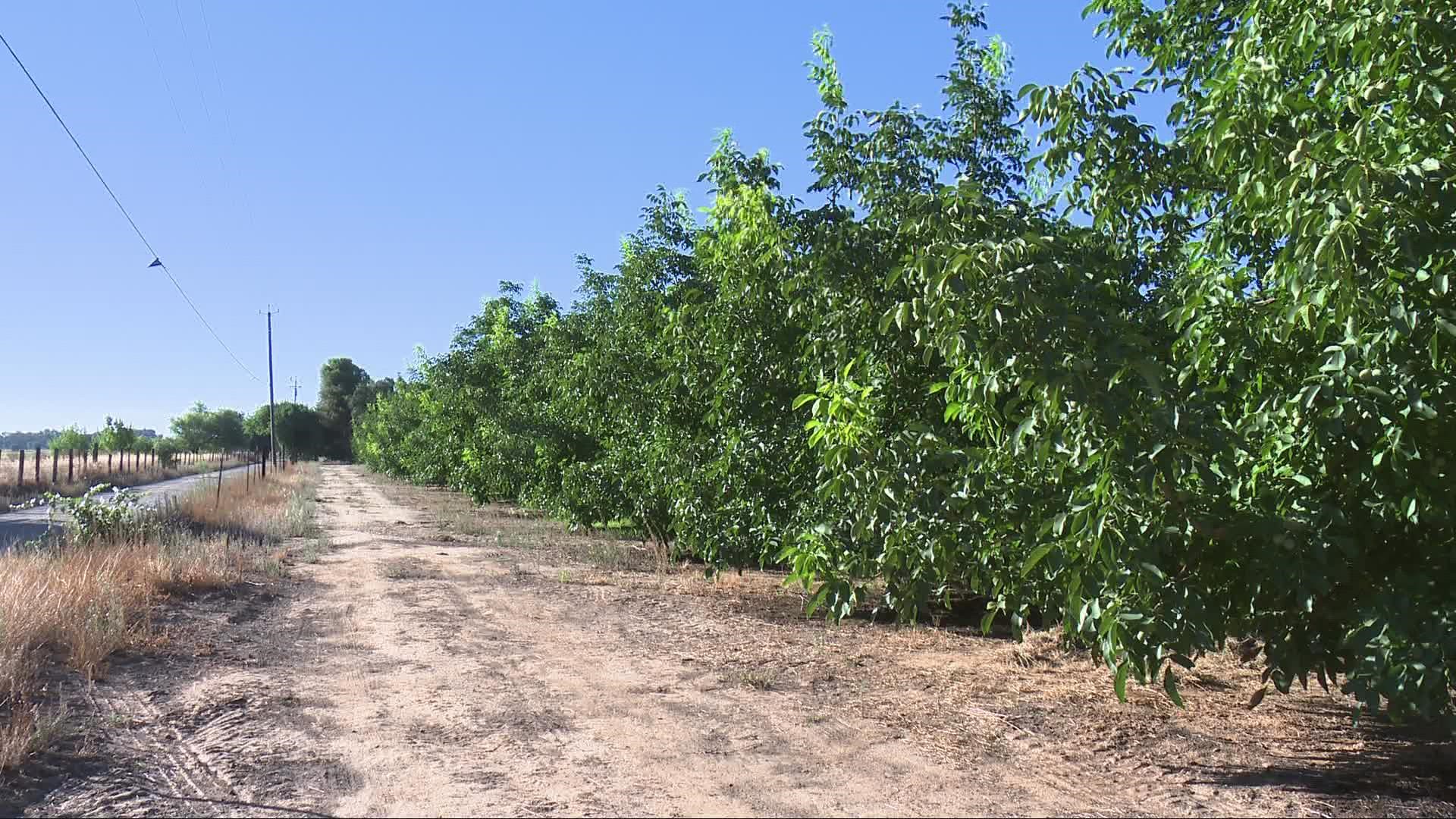SACRAMENTO, Calif. — A new plan to reroute how water moves from wetter Northern California to drier Southern California would ferry it through a single, 45-mile (72-kilometer) underground tunnel, wrapping around the state’s existing water delivery system and dumping the water straight into the main aqueduct that sends it south to vast swaths of farmland and millions of people.
The scaled back proposal released Wednesday would build one tunnel to take water from the Sacramento River, the state's largest, to the California Aqueduct for delivery to millions of people and farmland further south.
It's a change from the two-tunnel plan championed by former Gov. Jerry Brown and the latest iteration of a project that has been talked about and planned in some form since the 1980s, but never been under construction.
State water officials say the project is badly needed to modernize the state's water infrastructure in the face of climate change, which scientists say is likely to cause both prolonged droughts and major deluges of rain and snow.
Though California is in the third year of a punishing drought, it also saw record rain falls last October and another major dump of rain and snow in December, some of which the state was unable to capture and store for later use.
“Our water infrastructure was not built for that," said Wade Crowfoot, secretary of California's Natural Resources Agency.
The Department of Water Resources plan analyzes the effects of the project on the environment, residents, fish and farmland. Critics say it will harm communities in the fragile Sacramento-San Joaquin River Delta, which rely on water that could instead be diverted to the tunnel.
Officials did not release a price tag for the latest iteration of the project. A prior estimate for a different route put it at about $16 billion, which would ultimately be paid by water agencies that contract with the state to use it, said Carrie Buckman, environmental program manager for the project. If it moves ahead, construction likely wouldn’t break ground until at least 2028 and would take more than a decade.
That preferred route would build two new intake stations that pull water from the Sacramento River just south of the capital city near the small communities of Hood and Courtland.
It would then carry that water underground south alongside Interstate 5 before breaking off toward Bethany Reservoir at the top of the California Aqueduct, the state's main channel for moving water south, built in the 1960s.
California conveys water through a system known as the State Water Project, which supplies about 27 million people and 750,000 acres (303,400 hectares) of farmland with fresh water. That water comes from the Delta, a vital estuary where the two rivers mingle with tidal flows from the Pacific Ocean.
In the southern end of the Delta, two major state and federally run pumping plants suck up the water and send it south. The proposed tunnel project would instead take the water from the Sacramento River before it reaches the Delta and route it around the system, delivering it below the pumps and into the aqueduct.
The Delta region is home to millions of people, more than 400,000 acres (161,870 hectares) of farmland and critical species like salmon and the Delta smelt. It relies on adequate flows from the two rivers to stay in balance, and advocates in the region worry the tunnel will divert that fresh water before it reaches them.
The state already lacks enough water to keep the Delta flourishing and fulfill its existing contracts to deliver water.
“We believe, once we get into the details, that the proposed project will take out more water," said Barbara Barrigan-Parrilla, executive director of Restore the Delta.
State officials downplay those doubts, saying the tunnel would only be used at times of year when there is a lot of water pouring through the river, like after a major rainstorm. Had the tunnel existed during a major rain storm last December, the state would have been able to pump 236,000 acre feet of water south, enough to supply about 2.5 million households for a year, Crowfoot said.
Water officials say the chosen path would have the least negative consequences of the various options. Still, the 10-year construction could affect local air quality and would increase greenhouse gas emissions.
Construction would require removing 71 buildings, including 15 homes, as well as overtaking 2,340 acres of farmland and running through cultural resources and sites significant to tribal communities, the report said.
As for fish, the project could hurt both the Delta smelt and the endangered winter-run Chinook salmon, though the state said it has plans to mitigate those impacts. The project could harm water quality by increasing the amount of bromide and chloride as well as the salt content.
Crowfoot, the natural resources secretary, acknowledged managing the Delta is challenging but said the newly approach strikes a better balance than previous attempts.
“It is a conundrum to be able to manage the Delta in a way that protects the environment, respects the communities that live there and provide for the water supplies for a large portion of the state," he said.
The Metropolitan Water District of Southern California is the state's largest water contractor, using water from the Delta to help supply 19 million people. The district is working to expand its water supply with non-Delta sources, but the project is critical to provide flexibility and ensure the state is capturing all of the water that it can, said Adel Hagekhalil, the district’s general manager.
Watch more from ABC10: New drug could offer hope for people who can't get a COVID-19 vaccine

















